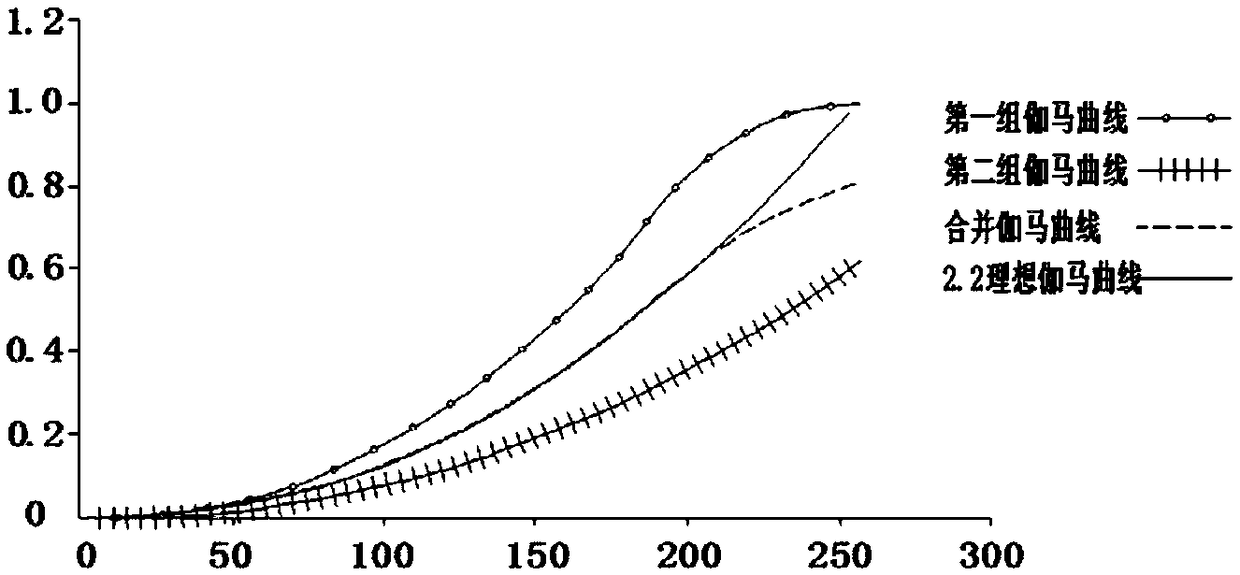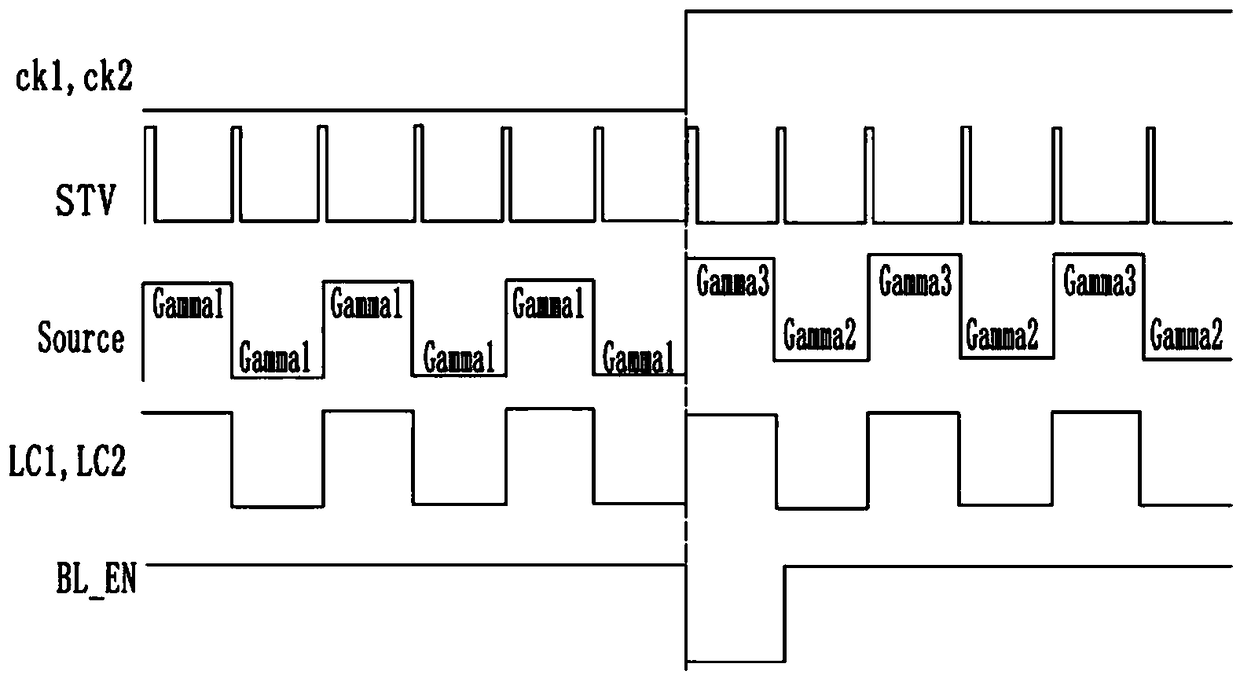Viewing angle switching architecture, method thereof and liquid crystal display device
A technology of viewing angle and display mode, which is applied in the field of liquid crystal display, can solve the problem of not supporting two sets of gamma voltage switching, and achieve the effect of improving image quality
- Summary
- Abstract
- Description
- Claims
- Application Information
AI Technical Summary
Problems solved by technology
Method used
Image
Examples
no. 1 example
[0026] Please refer to figure 2 , figure 2 It is a schematic circuit diagram of the viewing angle switching architecture of the first embodiment. Such as figure 2 As shown, the perspective switching architecture of this embodiment includes a timing control module 100, a first processing module 200, a second processing module 300, and a source driving module 400. Wherein, the timing control module 100 outputs the voltage calling instruction and the first polarity control signal LC1 according to the first display mode control signal ck1, and outputs the second polarity control signal LC2 according to the second display mode control signal ck2. The first processing module 200 outputs a first voltage generation instruction according to the first display mode control signal ck1, and outputs a reset signal according to the second display mode control signal ck2. The second processing module 300 receives the first polarity control signal LC1 and the first voltage generation command...
no. 2 example
[0044] Please refer to Figure 4 , Figure 4 This is the work flow chart of the perspective switching architecture of the second embodiment. This embodiment provides a method for switching perspective switching architecture, which includes the following steps:
[0045] S11: The timing control module determines whether the mode control signal is the first display mode control signal or the second display mode control signal;
[0046] S12: The timing control module outputs the voltage calling instruction and the first polarity control signal according to the first display mode control signal;
[0047] S13: The first processing module outputs a first voltage generation instruction according to the first display mode control signal;
[0048] S14: The second processing module receives the first polarity control signal and the first voltage generation instruction, and executes the first voltage generation instruction to output multiple external supply voltages;
[0049] S15, the source drivi...
no. 3 example
[0057] Please refer to Figure 5 , Figure 5 This is the work flow chart of the perspective switching architecture of the third embodiment. The viewing angle switching method provided by this embodiment is basically the same as the second embodiment, except that: the first polarity control signal is a fixed voltage signal; the multiple external supply voltages are multiple first gamma voltages; the second polarity The control signal is an inverted signal per frame;
[0058] Wherein, the step of resetting according to the reset signal and periodically outputting the second group of gamma voltages and the third group of gamma voltages according to the second polarity control signal cycle includes: the first processing module stores the second voltage generation instruction and the first Three voltage generation instructions, according to the second polarity control signal to alternately execute the second voltage generation instruction and the third voltage generation instruction...
PUM
 Login to View More
Login to View More Abstract
Description
Claims
Application Information
 Login to View More
Login to View More - R&D
- Intellectual Property
- Life Sciences
- Materials
- Tech Scout
- Unparalleled Data Quality
- Higher Quality Content
- 60% Fewer Hallucinations
Browse by: Latest US Patents, China's latest patents, Technical Efficacy Thesaurus, Application Domain, Technology Topic, Popular Technical Reports.
© 2025 PatSnap. All rights reserved.Legal|Privacy policy|Modern Slavery Act Transparency Statement|Sitemap|About US| Contact US: help@patsnap.com



